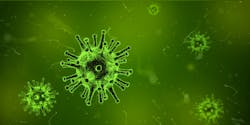Tech Tip: The difference between cleaners and disinfectants
A cleaner or degreaser is not the same as a disinfectant, just as a disinfectant is not the same as a cleaner or degreaser. When using a disinfectant, one must read the use instructions for the brand being used. Most disinfectants require 45-second contact on the surface to be effective, while others require up to 90 seconds. Just spraying and wiping away the disinfectant will not “kill a virus” if you will. Also, be aware that most disinfectants are for use on hard, nonporous surfaces, so if you are spraying and wiping with a cloth there’s a good chance you are just transferring the virus to another surface.
If the surface is dirty it needs to be cleaned first for the disinfectant to be really effective. Think about the food industry, and how they require washing the surface, rinsing the surface, and then sanitizing. Apply those same requirements around the shop on tools and equipment, as well as vehicles you may be working on.
Information provided by Kafko International
